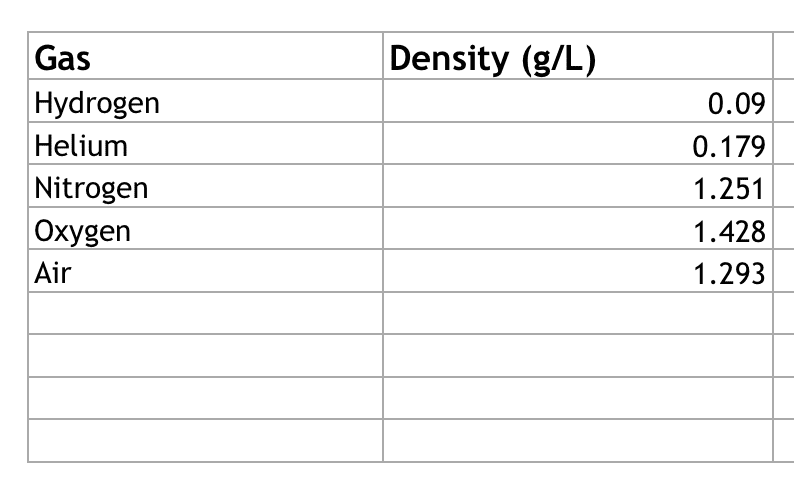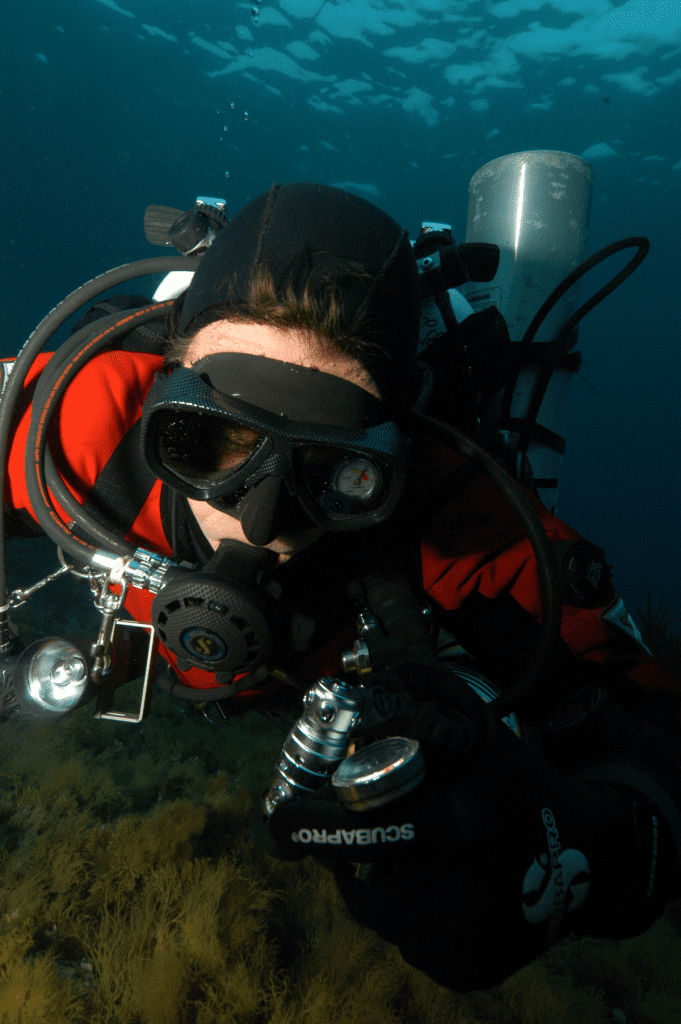Education
Density Discords: Understanding and Applying Gas Density Research
Do you know the density of your breathing gas at your planned working depth? New research conducted by Gavin Anthony and Simon J. Mitchell suggests that you better! A gas density of 6 grams/liter (g/l)—the equivalent of diving nitrox 32 at 110 ft/34 m, or trimix 18/35 at 200 ft/61 m—significantly increased the risk of dangerous CO2 retention, resulting in test subjects experiencing problems at three times the rate of divers using gas even 1 g/l less dense. Divers Alert Network risk mitigation leader Reilly Fogarty explains.

By Reilly Fogarty
Header photo by Derek Remmers
As divers we’ve learned to adapt to the effects of depth without fully understanding the mechanisms behind them. Gas density is one of those misunderstood dynamics lurking in the background of many of our dives. We minimize our work at depth, improve our fitness, and add helium to reduce narcosis and work of breathing (WOB) at depth, but these are reactionary responses. While we typically can’t discern the difference during a dive, gas density and the accompanying increase in WOB causes decreased respiratory capacity, increased CO2 production, and decreased ability to eliminate CO2 in the blood. Some agencies (e.g., GUE) have been proactive in modifying standard gases and tailoring training to adapt to these concerns, but the forefront of hyperbarics research is constantly pushing us toward increasingly conservative gas choices.
Just to clear the air, we’re working with two terms here — WOB and gas density. WOB is an integral of pressure as a function of volume that’s used to measure the effort required to breathe. A high WOB means it takes more effort (measured in energy, typically joules) to draw breath (a measure of volume, typically in liters). High WOB results in increased CO2 production, and that CO2 increase can result in hypercapnia, narcosis, and loss of consciousness among other symptoms.
Gas density is a measure of mass per unit volume, measured in grams per liter (g/l). A high gas density means a given volume of gas weighs more and takes more effort to move, resulting in increased WOB. Increased gas density also skews the pressure gradient between inspired and arterial CO2, resulting in further decreased CO2 off gassing efficiency and a recurring system that results in further complications.

In the past, these factors were taken for granted, but recent research by Gavin Anthony and Simon J. Mitchell from the University of Auckland Department of Anaesthesiology (see link below) has cast gas density in a new light. Working with both open-circuit and rebreather divers, Anthony and Mitchell found that gas density near the 6 g/l mark significantly increased the risk of dangerous CO2 retention during dives, resulting in their test subjects failing more than half their attempted dives and experiencing issues at more than three times the rate of divers using gas even 1 g/l less dense. Their takeaway from this research was an ideal maximum gas density of 5.2 g/l (equivalent to air at 102 fsw/31 msw), and a hard maximum of 6.2 g/l (equivalent to air at 128 fsw/39 msw).
Anthony and Mitchell found that gas density near the 6 g/l mark significantly increased the risk of dangerous CO2 retention during dives, resulting in their test subjects failing more than half their attempted dives and experiencing issues at more than three times the rate of divers using gas even 1 g/l less dense.
The implications of these results are both complex and far-reaching. Recreational and technical divers alike face issues with gas density under these new guidelines. The use of EANX 32 (32% oxygen, 68% nitrogen) at 110 fsw/34 msw exceeds recommendations with a gas density of 5.66 g/l and more than 6.54 g/l at 132 fsw/40 msw. Technical divers using trimix 18/35 (18% oxygen, 32% helium, balance nitrogen) will overshoot recommendations, reaching 6.93 g/l at 200 fsw/61 msw and a PO2 of just 1.26, and trimix 10/70 (10% oxygen, 70% helium, balance nitrogen) reaches an impressive 6.73 g/l at 396 fsw/121 msw and 10.29 g/l at 495 fsw/151 msw.

The reality is that gas density is another in a series of dynamic risk factors that divers of all levels must contend with. Treating gas density like DCS by acknowledging and mitigating the hazards via personal fitness, decreased work at depth, and appropriate dive planning has worked in the past and will continue to work. What this research shows us is why we face the issue we do at depth, a possible understanding of corollary hazards like DCS and IPE, and how we might be able to use that data to keep ourselves safer.
View the Respiratory Physiology of Rebreather Diving research in full. For questions about gas density or comments about this and future articles, reach out to the author at RFogarty@DAN.org.
Gas Density Calculator
Here is a simple gas density calculator for you to download, created by Brendon Allen aka RainPilot, at ScubaBoard.com, that enables one to calculate the gas density of their bottom mix at their planned depth (in ATA). It also includes equivalent narcotic depth (END), and partial pressure of oxygen (PPO2) at the planned max depth.

Reilly Fogarty is a team leader for its risk mitigation initiatives at Divers Alert Network (DAN). When not working on safety programs for DAN, he can be found running technical charters and teaching rebreather diving in Gloucester, MA. Reilly is a USCG licensed captain whose professional background also includes surgical and wilderness emergency medicine as well as dive shop management.



















































